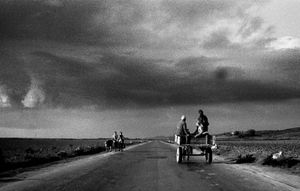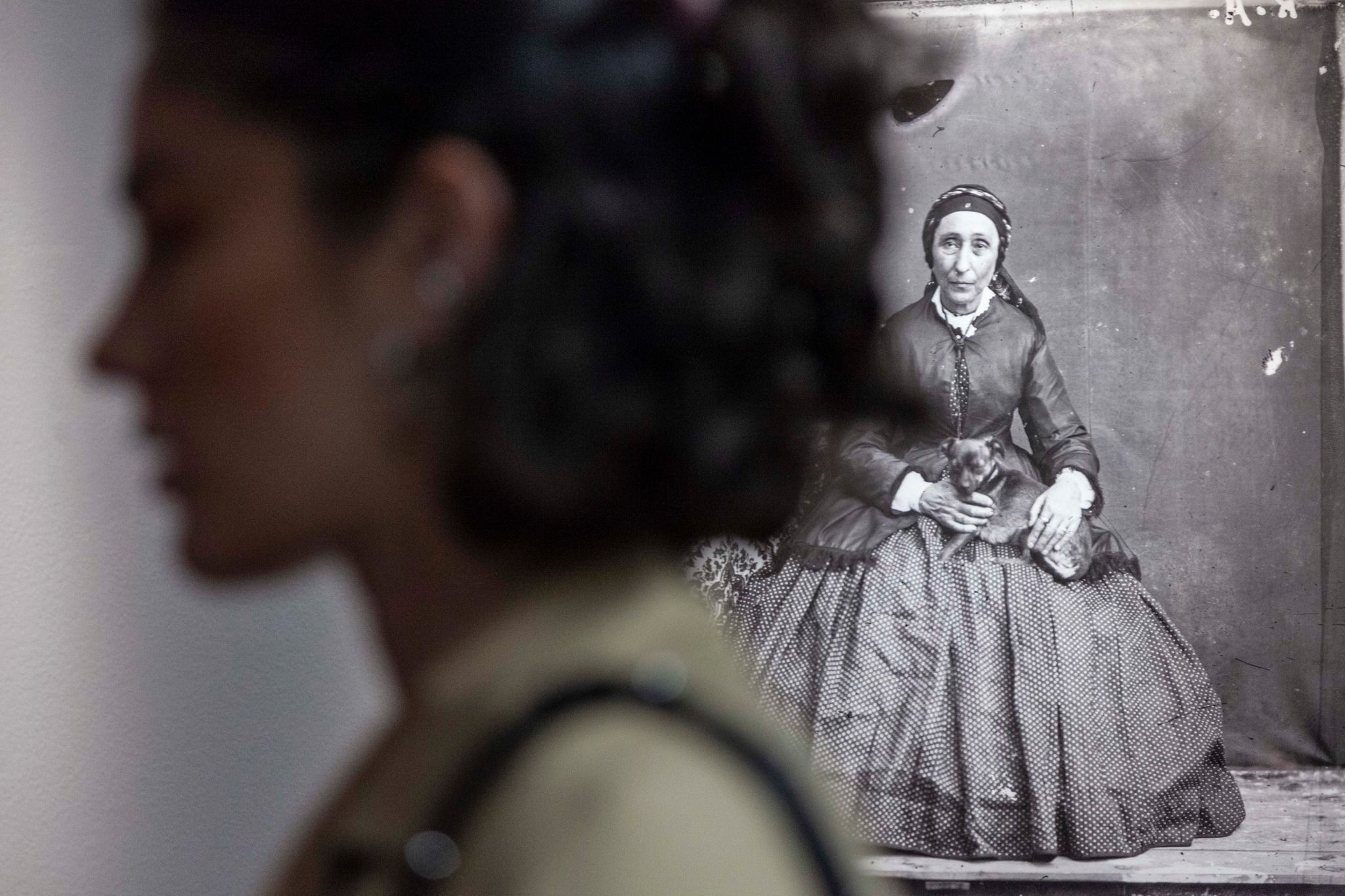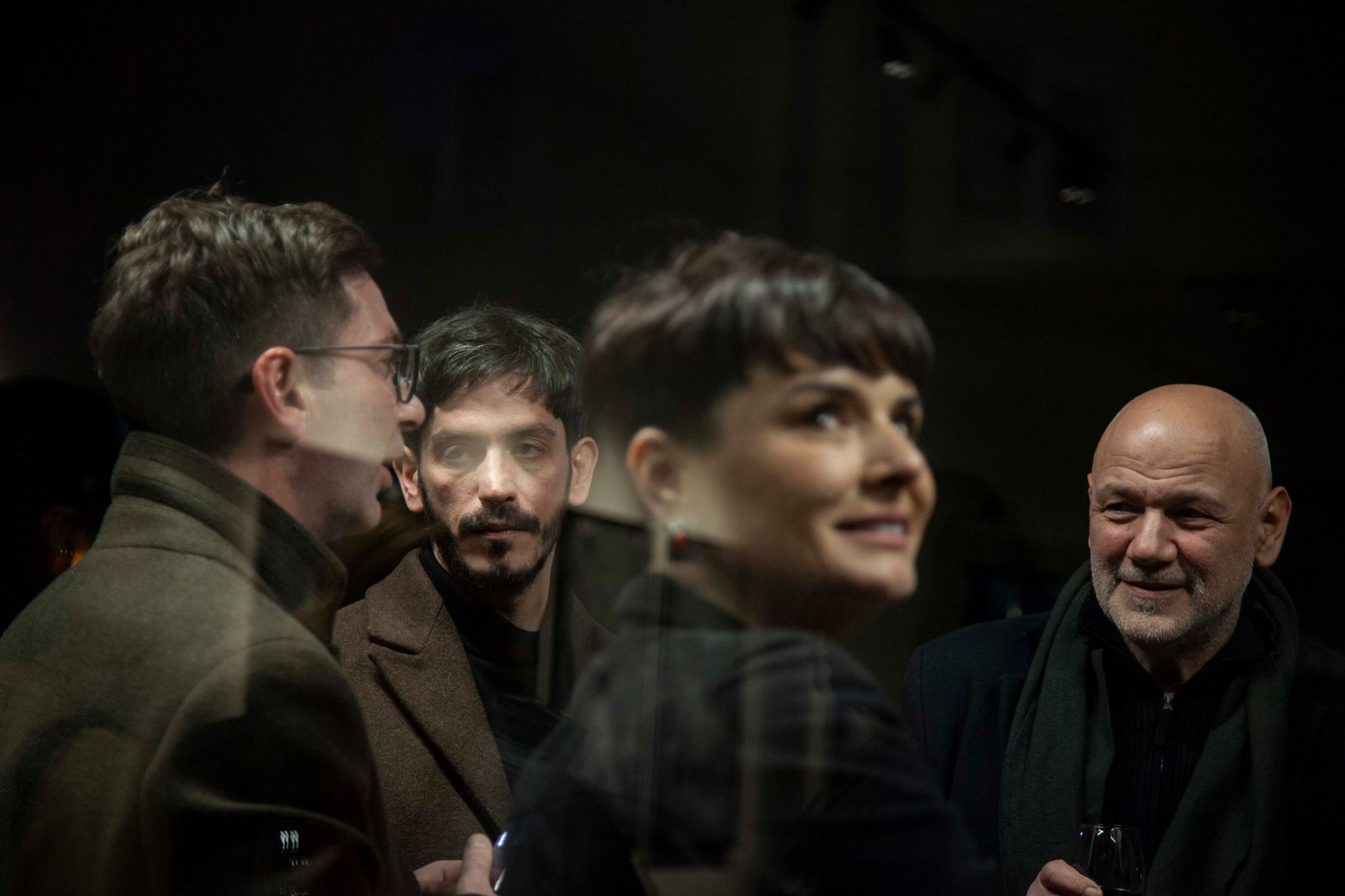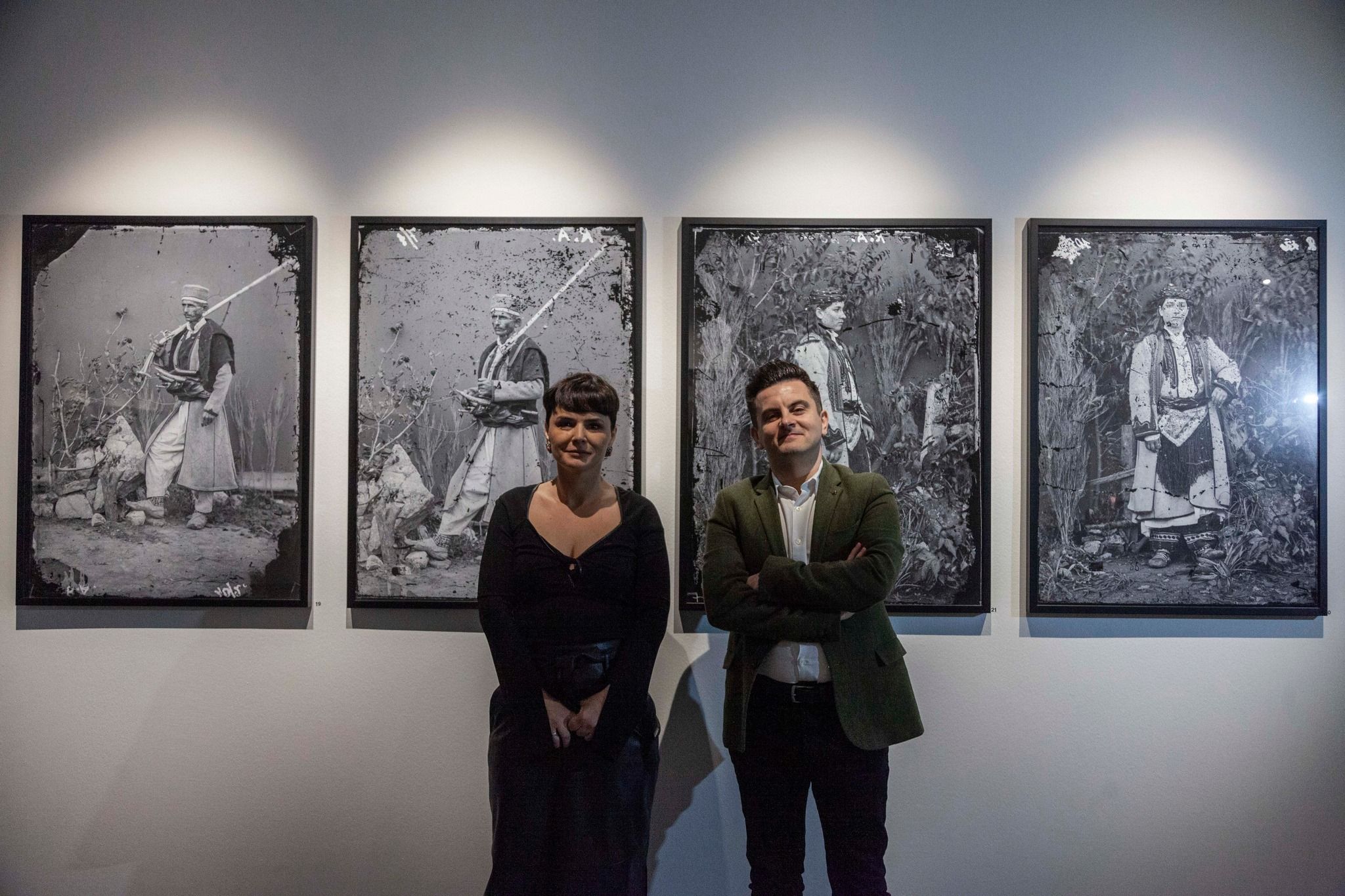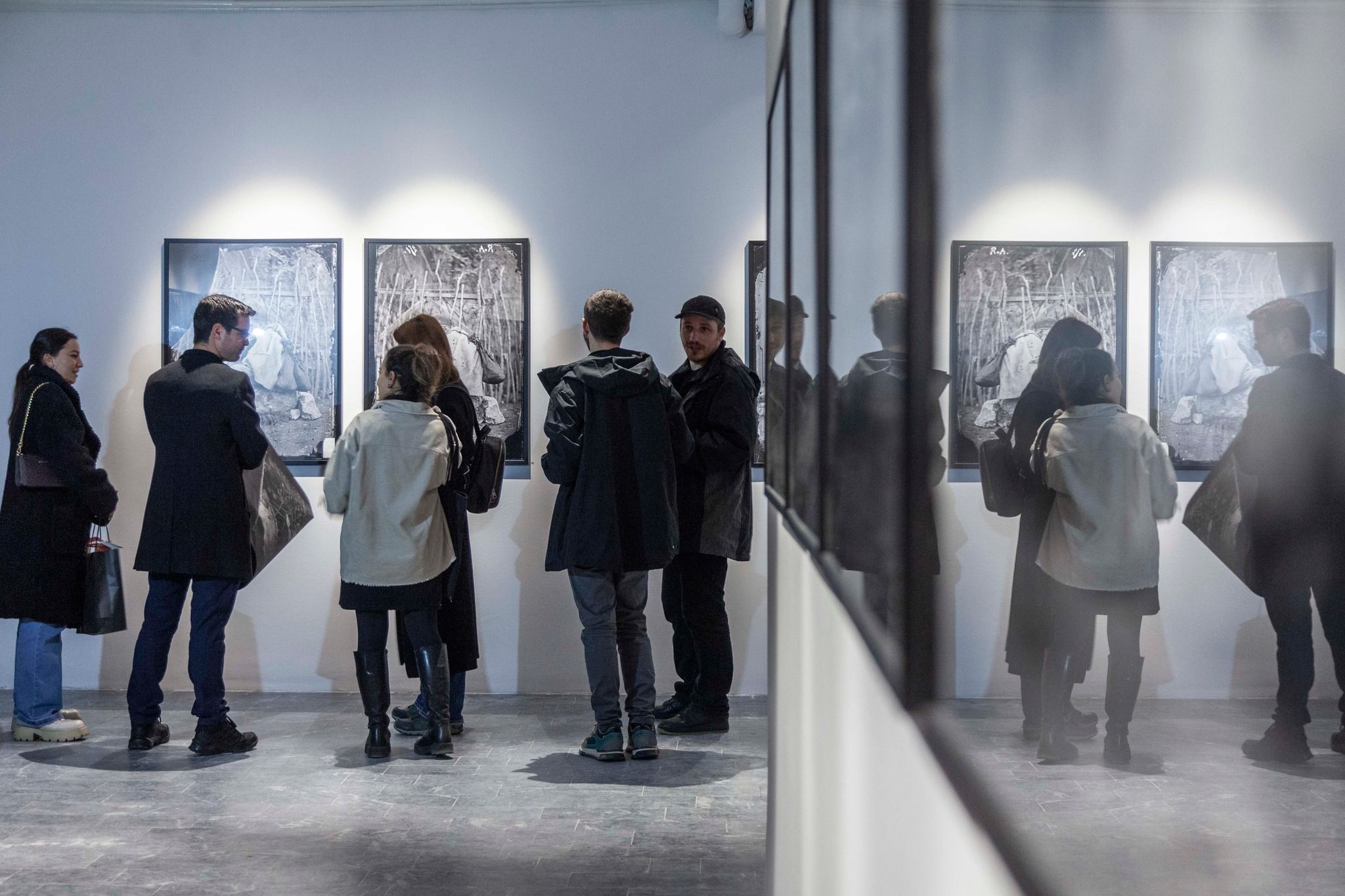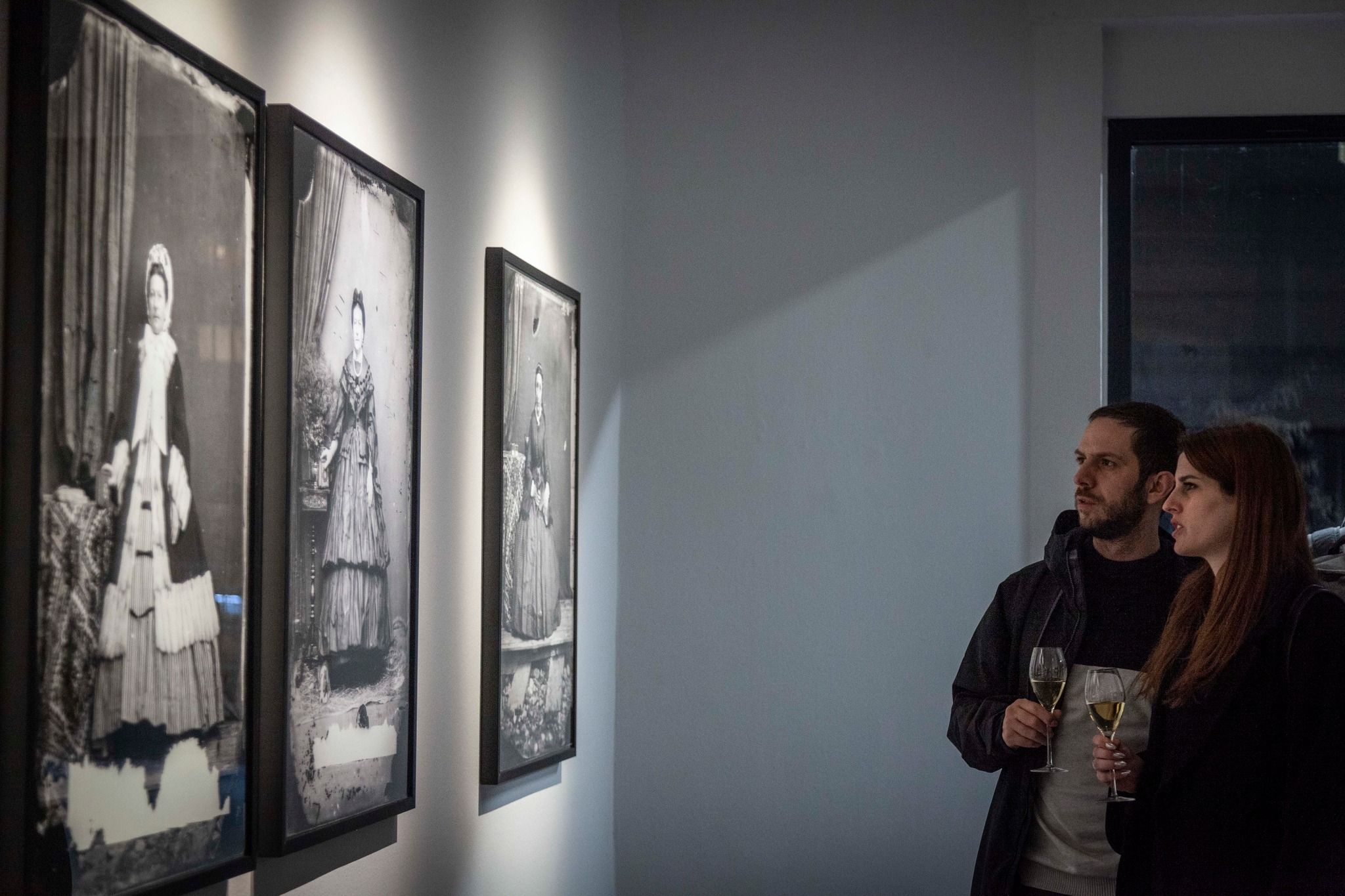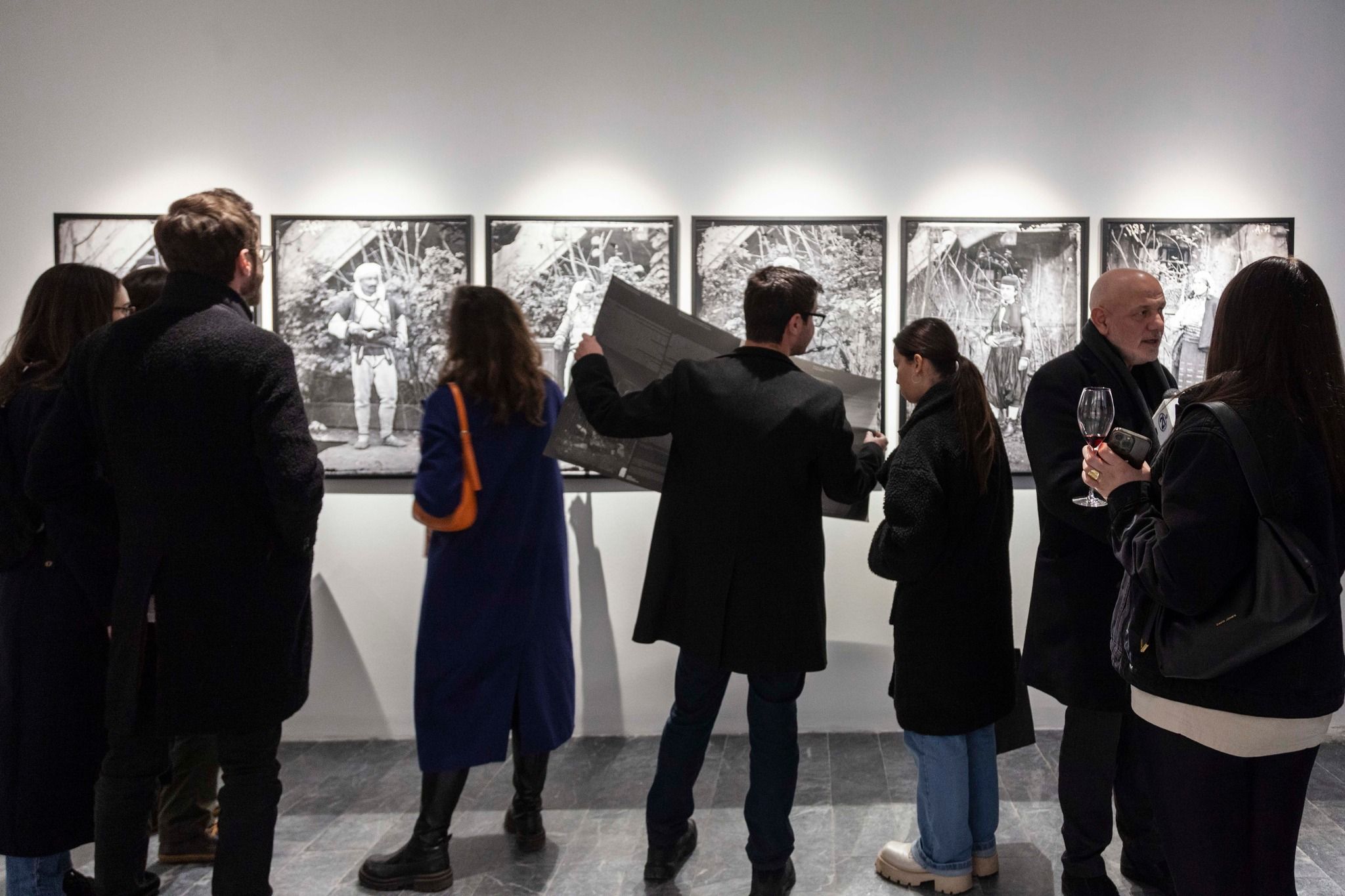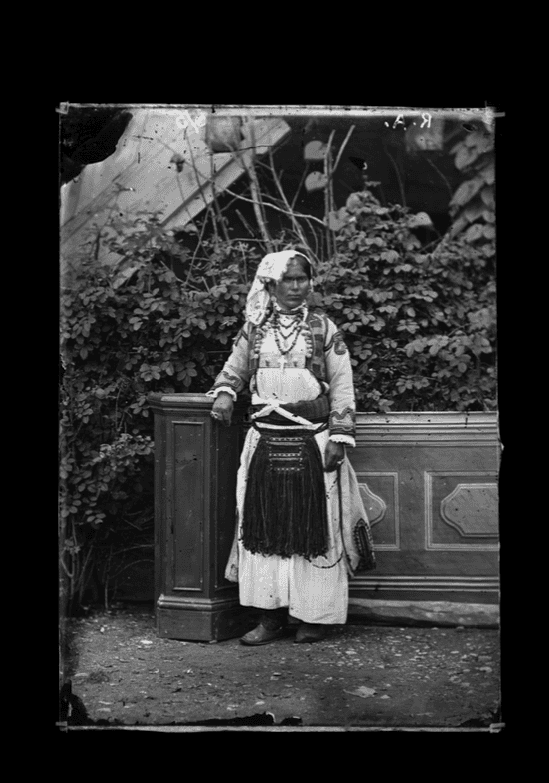The Tent of Encounters in a Courtyard
–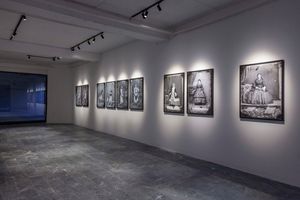
The argument over the opening of the first photography studio in Albania has divided public opinion for many years. Pietro Marubbi, who fled Italy in 1858, due to political issues, to reside in Shkodër, has been the subject of several inquiries. Did Marubbi come as a well-established photographer? When did he set up his photography studio? What did this studio look like? Who were the first people to sit for him? These were a few of the queries, the responses to which have given rise to an accurate understanding of Marubbi’s early photography pursuit. Pietro Marubbi shot several photographs of various Shkodra residents in the mid-60s of the XIX century, as well as a few passersby who he probably used as “models.” These images, which appear to have been taken in a studio, were actually taken in an open courtyard that Marubbi had skillfully set up with scenography furnishings. Through the examination of these objects and other elements that are repeated throughout the images, we can identify stones, shrubs, trees, flower pots, and embalmed animals, all used as complementary props to the sceneries. The most authentic evidence of the Italian Pietro Marubbi’s popularity in Shkodër comes through the groups of patriots, chieftains and flag bearers, representatives of foreign powers, delegates and politicians, as well as women and men dressed in city, village, and highland attire, who pose in the spacious courtyard that has been converted into a studio.
The chieftains of Mirdita on the occasion of the burial of Bib Doda; The three Hoti chieftains: Marash Uci and Cal’s sons; Selm Begu, the son, with the leaders of Malsia; A group of hunters; Vasel Mark of Hoti; Nik Leka of Kelmendi; Women from the countryside of Shkodër dressed in costumes; Mati Kodheli; and A poor old man are all images taken at the same shooting scene with only the lens angle being altered. A cobblestone road, a little window, a stone-arch door, a wooden staircase and then a fence and some flower pots are among the items that stand out in these images and occur again and again throughout all the photographs. It’s very interesting to note that in the picture Gani Beg Toptani surrounded by a group of warriors in order to change the arrangement of the picture Marubbi brings out the backdrop from the proper studio to the courtyard. While we observe all these influential people following Marubbi’s “command,” who he sometimes puts seated and other times standing, sometimes leaning on a rock, and other times on the floor, these images demonstrate the significance of the prestige that Marubbi had established in those days. Every single photograph is still quite fascinating to examine in terms of how the photographer transforms the courtyard into a stage for his photo shoots. By looking at the pictures and the people that are in them, we have also been able to put together a picture of the courtyard. The picture of Mati Kodheli, one of the uncommon ones discovered in the archive, is the one that has impressed me the most. The most intriguing aspect of this image is a gear-driven device on the left, which controls from below a canopy used to soften intense light and harsh contrasts, transforming the courtyard from an outdoor to an indoor space. The chosen photos provide us a trustworthy account of the circumstances surrounding the creation of Marubbi’s early photographs.
Some pictures might suggest that the entire story sets about inside a typical Shkodran courtyard, which served as the “antechamber” of the studio where the most important personalities of the time came to pose. The significance of taking a photograph in this studio can only be matched by the masterpiece of Albanian literature “Lahuta e Malcìs” by Father Gjergj Fishta, who dedicates the twelfth song to Marash Uci and Cal’s sons, who we see sitting for Marubbi in his courtyard. The photograph of the poor old man guy resting on a stone was one of the photo-studio “Marubi’s most recognizable image. I was fascinated by this picture since I was never sure whether Marubbi took it by chance or if the elderly man showed up and posed for him. The images which all
share the common trait of being taken at the same location in the yard, have provided the answer to this uncertainty. These pictures leave no room for doubt that they weren’t taken at random but were rather meticulous compositions in the makeshift photo-studio in the courtyard. An impressive testimony comes from another photograph of this poor old man, taken in the same position. By comparing these two images one can realize that Pietro Marubbi engages this individual as a “model” in his studio. These two images provide the best illustration of his pursuit of a have-it-all image.
It is for good reason that the better-known photography of the two is the one with a clear focus of the image, where the garden fence is fairly out of focus, and the alignment of the person in the first image is vividly putting across the sensation of experiencing the old man’s poverty and misery. In the well-known photograph, we can discern a stooped old man resting his
forehead on the stick in his hand. The belief that Pietro Marubbi’s early photography career was about his commitment to photographing people—who he would pick up off the street and use as models before making into postcards that he then sold—has been confirmed for me by these images and others like them. The cabinet card negatives in the collection of the Marubi Museum archive and the cabinet cards that were discovered in the library archive of Istanbul University are all important pieces of evidence recording the entire process of photographing, printing, and, in the case of some of them, coloring of the cabinet cards. These photos are the first to reveal an Albania entirely unknown to foreigners until the 1870s. These pictures of Marubbi would be extensively disseminated by Viennese lithographers, who printed them out turning them into postcards or, as we know them, souvenir postcards, with the inscription Souvenir de Scutari d’Albanie.
Excerpt from the PhD dissertation: Pietro Marubbi and the establishment of the first photography studio in Albania.
—Luçjan Bedeni, 2021
Exhibition Credits
- Exhibition venue
Gallery of the Ministry of Culture of Kosovo
- Curated by
Luçjan Bedeni
- Supported by
Ministria e Kulturës, Rinisë dhe Sportit e Kosovës


